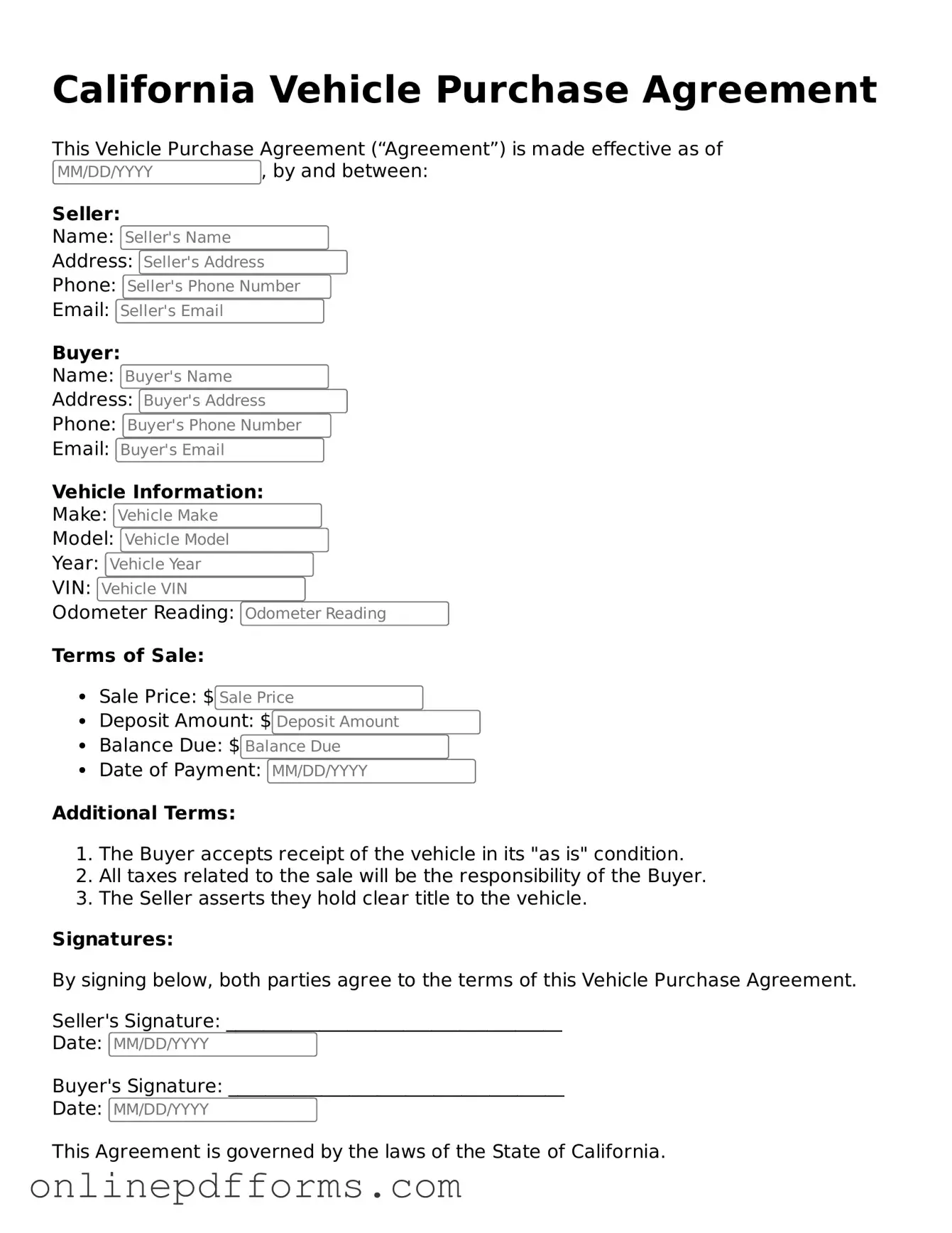Blank California Vehicle Purchase Agreement Form
The California Vehicle Purchase Agreement form is a legal document that outlines the terms of a vehicle sale between a buyer and a seller. This agreement serves to protect both parties by detailing the purchase price, vehicle information, and any warranties or conditions related to the sale. Understanding this form is essential for anyone looking to buy or sell a vehicle in California.
Ready to get started? Fill out the form by clicking the button below.
Open Vehicle Purchase Agreement Editor Now
